Bananas are one of the most popular fruits worldwide, but what happens to the peels once you finish eating the fruit? Instead of tossing them in the trash, banana peels can become a natural, nutrient-rich fertilizer for your garden. Packed with essential nutrients like potassium, phosphorus, calcium, and magnesium, banana peels can enhance plant growth, improve flowering, and even deter pests.
In this guide, we’ll explore how to use banana peels for plant growth, covering different methods of application, benefits, precautions, and tips to maximize their effectiveness. Whether you have houseplants, vegetables, or flowering plants, banana peels offer a sustainable, eco-friendly way to nourish your greenery.
Why Banana Peels Are Beneficial for Plants
Banana peels contain a rich blend of nutrients essential for healthy plant development:
- Potassium (K): Improves root strength, flower formation, and fruit quality.
- Phosphorus (P): Encourages strong root development and aids in energy transfer within the plant.
- Calcium: Supports cell wall structure, preventing blossom end rot in fruits like tomatoes.
- Magnesium: Essential for photosynthesis, helping plants produce energy.
- Trace Elements: Includes zinc, sulfur, and iron that contribute to overall plant health.
Bonus: Using banana peels reduces kitchen waste, making it an eco-friendly gardening practice.
Step 1: Preparing Banana Peels
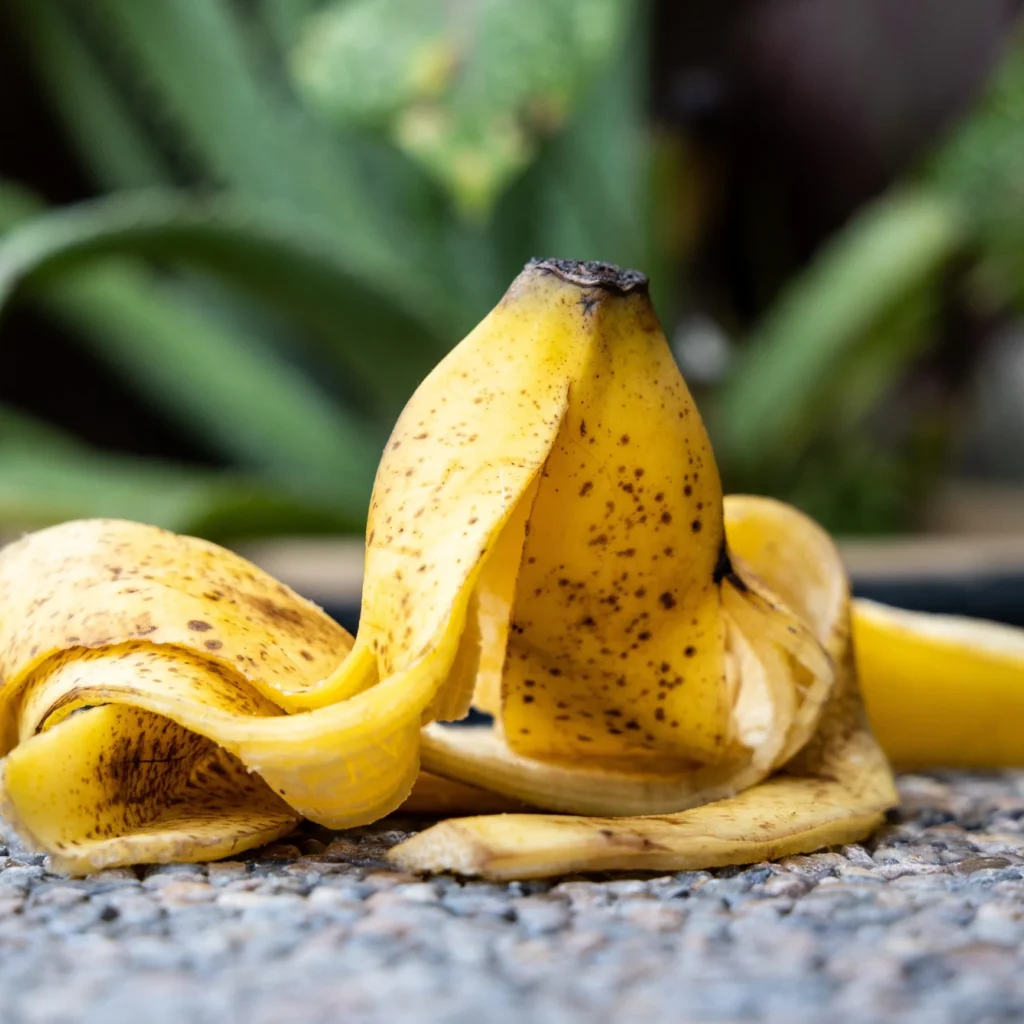
Before using banana peels, proper preparation ensures maximum nutrient absorption and prevents unwanted issues such as attracting pests.
Methods:
1. Fresh Banana Peels
- Simply cut the peel into small pieces.
- Bury them a few inches deep into the soil near the plant’s roots.
- This allows nutrients to gradually leach into the soil as the peel decomposes.
2. Banana Peel Tea
- Chop 1–2 banana peels and soak them in 2–4 cups of water for 24–48 hours.
- Use the liquid to water plants.
- Provides a quick nutrient boost and is easier to apply to multiple plants.
3. Dried Banana Peels
- Dry peels in the sun or in a low-temperature oven.
- Grind into a powder using a blender or mortar.
- Sprinkle around the base of plants or mix with potting soil.
- Powdered form reduces odor and decomposes more slowly for gradual nutrient release.
Tip: Always avoid peels with mold or rot, as they may introduce harmful fungi to the soil.
Step 2: Using Banana Peels for Indoor Plants
Banana peels are ideal for houseplants, herbs, and container plants.
Methods:
- Direct Burial:
- Cut peel into small pieces and bury under 1–2 inches of soil in the pot.
- Best for slow-growing houseplants like ficus or peace lilies.
- Banana Peel Tea:
- Use the liquid to water the plant once every 2–3 weeks.
- Works well for plants that need frequent hydration and nutrient boosts.
- Compost Mix:
- Chop banana peels and add them to indoor compost bins.
- Combine with coffee grounds and eggshells for balanced nutrients.
Tips:
- Rotate which plants receive peels to avoid over-fertilization.
- Avoid placing large peel pieces on the soil surface, as they may attract fruit flies.
Step 3: Using Banana Peels for Outdoor Plants
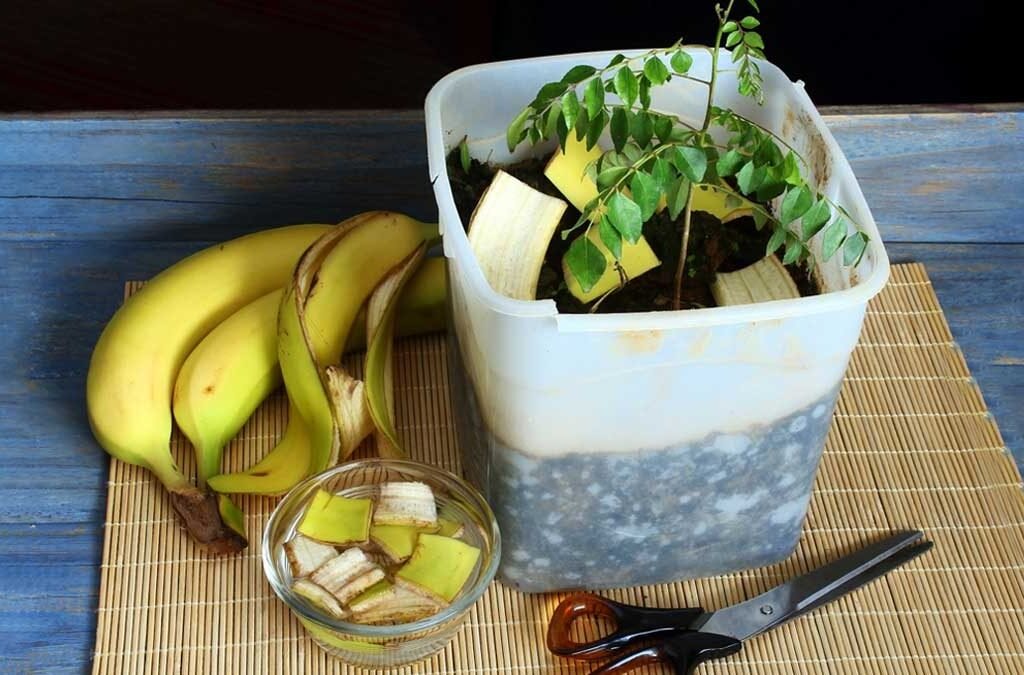
Outdoor gardens, including vegetables, flowers, and fruiting plants, benefit significantly from banana peels.
Vegetable Gardens
- Tomatoes, Peppers, and Eggplants: Bury small pieces near the root zone to prevent blossom end rot and promote fruiting.
- Leafy Greens: Banana peel tea can provide a nitrogen and potassium boost for lush, healthy leaves.
Flowering Plants
- Roses, Marigolds, and Geraniums: Use banana peel powder or bury peels around the base to improve flowering and vibrant colors.
Trees and Shrubs
- Chop peels and mix into the mulch around trees to release nutrients gradually over time.
Tips:
- Avoid overloading the soil with banana peels; too many can create excess moisture and attract pests.
- Cover buried peels with soil to accelerate decomposition and prevent fruit flies.
Step 4: Combining Banana Peels with Other Organic Fertilizers
Banana peels work even better when combined with other natural amendments:
- Compost: Add chopped banana peels to compost bins for a nutrient-rich mix.
- Coffee Grounds: Mix with peels to provide nitrogen along with potassium and phosphorus.
- Eggshells: Add calcium along with the potassium from peels for fruiting plants.
- Worm Castings: Enhance microbial activity and nutrient absorption.
Tip: Combining organic materials creates a balanced fertilizer that supports overall soil health and plant growth.
Step 5: Precautions for Using Banana Peels
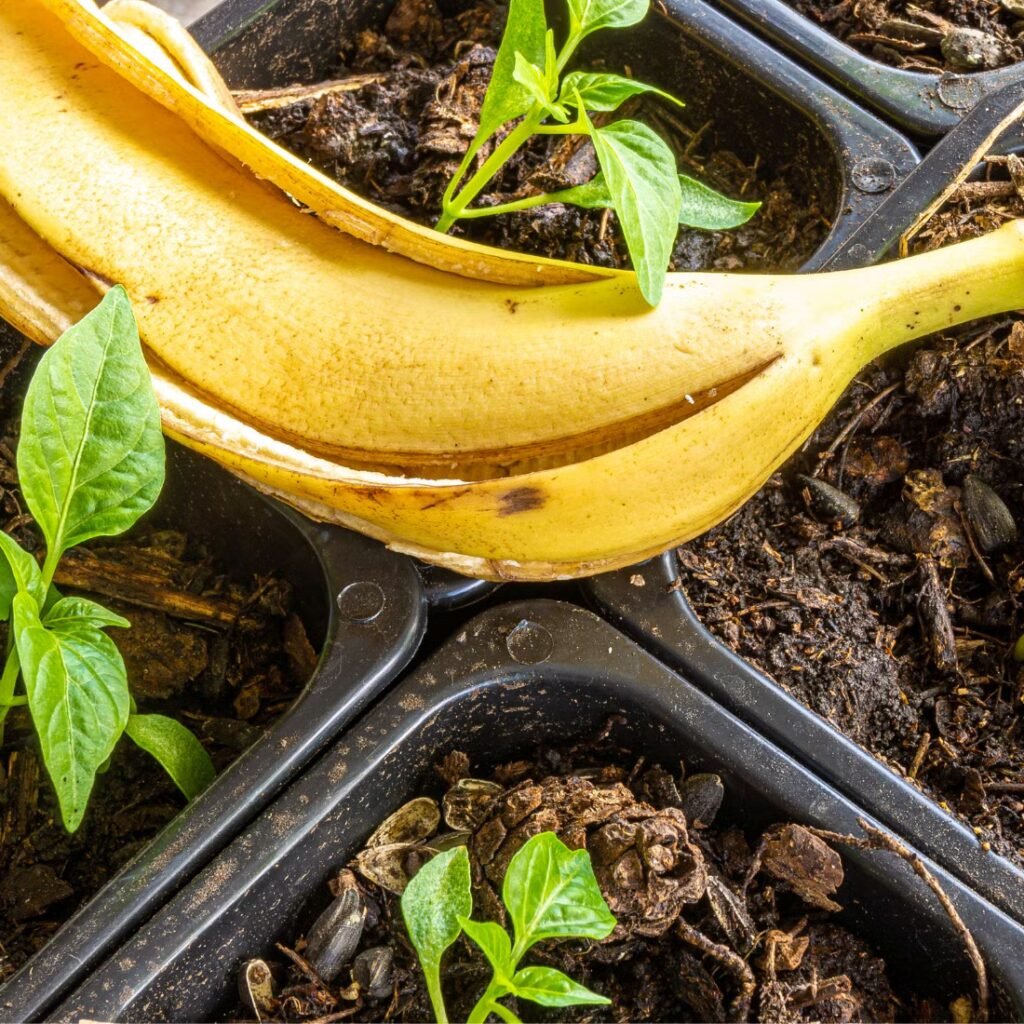
While banana peels are beneficial, some precautions are necessary:
- Avoid Direct Contact with Leaves: Banana peel juices can sometimes cause leaf burn in sensitive plants.
- Control Moisture: Excess moisture from decomposing peels can lead to root rot if not buried properly.
- Prevent Pest Attraction: Bury peels or turn them into tea to avoid fruit flies and ants.
- Moderation: Use peels sparingly; too much can alter soil pH and nutrient balance.
Step 6: Benefits of Using Banana Peels
- Eco-Friendly: Reduces kitchen waste and lowers the need for chemical fertilizers.
- Nutrient-Rich: Provides potassium, phosphorus, calcium, and magnesium naturally.
- Cost-Effective: Free fertilizer using materials already in your kitchen.
- Improves Soil Health: Encourages microbial activity and enhances organic matter.
- Enhances Flowering and Fruiting: Boosts plant growth, root development, and yields.
Step 7: Tips for Maximum Effectiveness
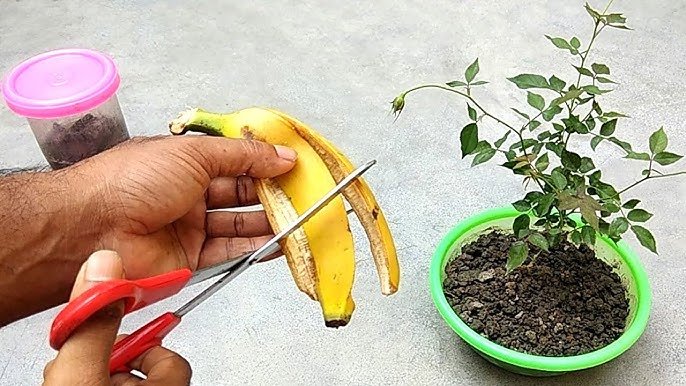
- Chop or blend peels to accelerate decomposition.
- Use a banana peel every 2–4 weeks depending on plant size and soil quality.
- Combine with watering and sunlight optimization for best results.
- Observe plants for signs of nutrient deficiency or over-fertilization.
- Store extra peels in the fridge for up to a week or freeze for longer-term use.
Step 8: Creative Uses Beyond Fertilizing
- Pest Deterrent: Some gardeners place peels around plants to deter aphids and rabbits.
- Seedling Boost: Banana peel tea can help seedlings develop strong roots.
- Mulch Ingredient: Mix peels with shredded leaves or straw to create organic mulch.
- Compost Accelerator: High potassium content speeds up decomposition of other organic matter.
Step 9: Sustainable Gardening with Banana Peels
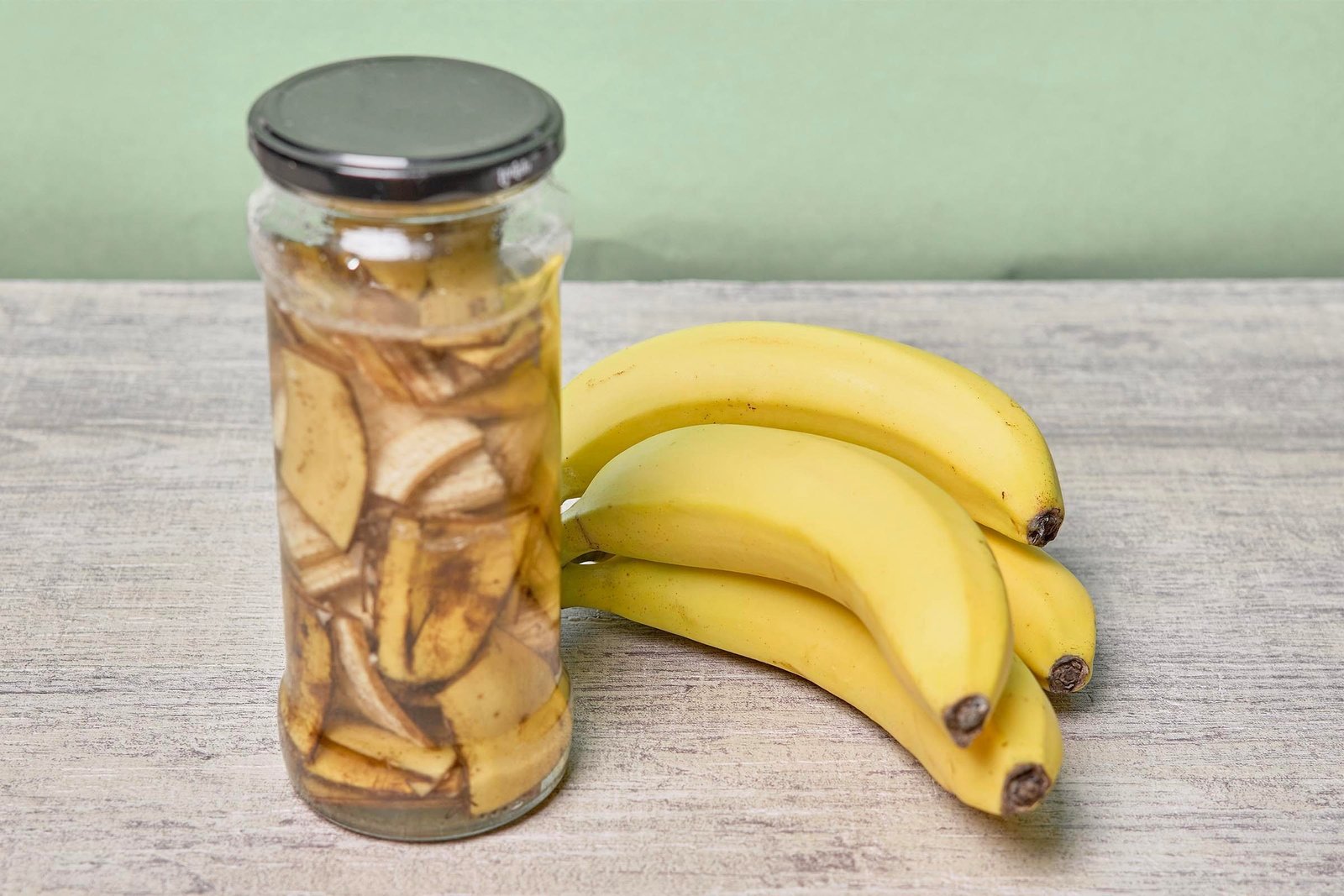
Incorporating banana peels into gardening routines promotes sustainability and eco-conscious practices:
- Reduces food waste by repurposing peels.
- Eliminates the need for chemical fertilizers.
- Supports soil health and encourages biodiversity in the garden.
- Cost-effective, especially for urban gardeners or balcony gardeners.
Tip: Small steps like using banana peels regularly can make a big difference over time for your garden’s productivity and environmental impact.
Step 10: Final Thoughts
Banana peels are a versatile, nutrient-packed tool for gardeners of all levels. Whether used as fresh chunks, powdered fertilizer, or banana peel tea, they offer an eco-friendly, cost-effective, and safe way to improve plant growth.
By following proper preparation methods, applying them carefully, and combining them with other natural fertilizers, banana peels can:
- Enhance root development
- Promote flowering and fruiting
- Strengthen overall plant health
- Reduce the need for chemical fertilizers
The beauty of banana peels lies in their simplicity and accessibility. By turning kitchen scraps into garden gold, you can grow healthier, more productive plants while reducing waste.
Whether you’re tending to indoor houseplants, a vegetable garden, or flowering shrubs, banana peels provide a sustainable and effective boost for your plants. Start incorporating them today and watch your garden flourish naturally!
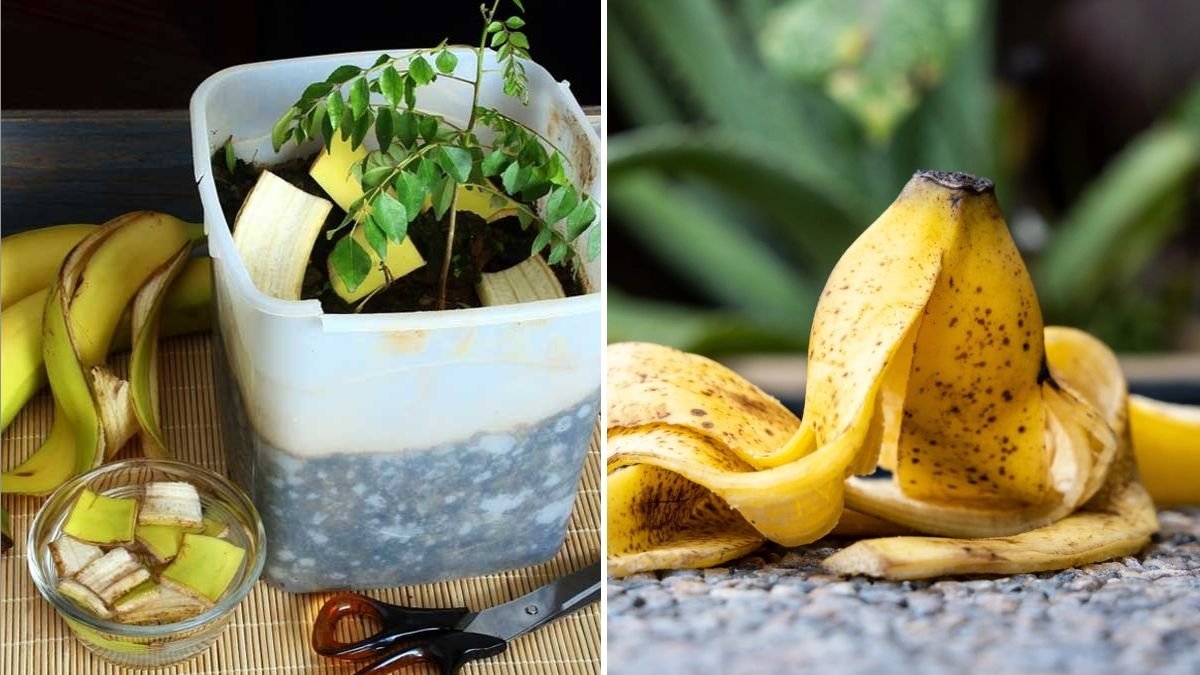



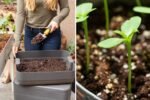

Leave A Comment